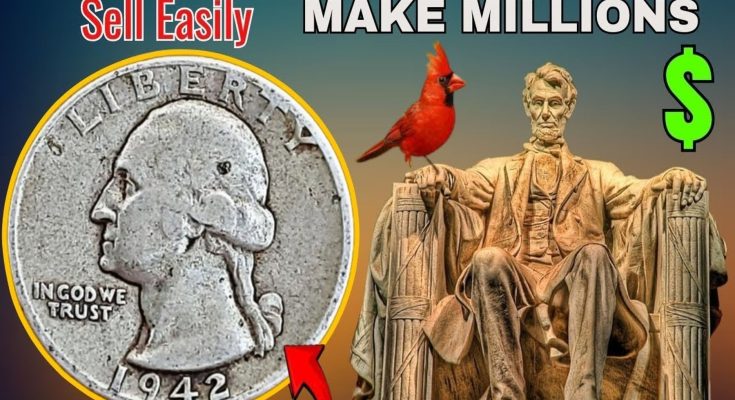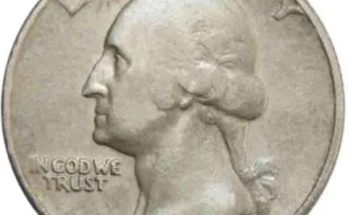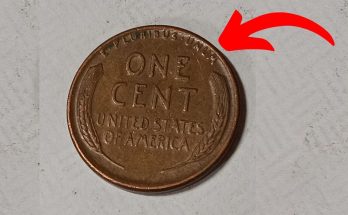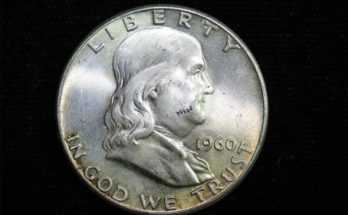This channels worth Coin is all about Numismatic, antique and rare coins and notes. Here you find information about coins and notes which are antique and unique. Please subscribe us for USA currency and Numismatic knowledge. thank you.
1980s were a period of economic recovery and technological advancement in the United States.
The 1985 Washington Quarter was part of a long-running series that continued to use John
Flanagan’s design. Unlike earlier decades, the 1985 quarters were struck exclusively in a copper
nickel-clad composition.
The obverse design features George Washington’s left-facing profile with the same inscriptions
as earlier coins. The reverse retains the eagle motif, a design that had become synonymous
with the Washington quarter by this time. The Philadelphia Mint produced seven, seven, five,
eight, one, eight, nine, six, two quarters, and Denver Mint five, one, nine, nine, six, two, zero,
zero, zero quarters.

These numbers make the 1985 quarter-one of the most widely produced in the series, ensuring
its availability in circulation today. Circulated 1985 quarters are generally only worth face value,
however, coins in uncirculated condition can be worth $5 to $20, with MS-67 or higher
examples fetching up to $150. Proof coins from this year produced at the San Francisco Mint
are also popular among collectors, particularly those with deep cameo finishes.
The 1985 quarter offers a range of potential errors that pique collector interest. These include
rotated dyes, off-center strikes, and struck through errors. The 1985 Washington quarter
represents a modern era of U.S. coinage, while most examples are common, the right-error or
high-grade specimen can turn an ordinary coin into a collector’s prize.
Next up, let’s begin with the 1980 Washington quarter in fine condition. The 1980s were a
dynamic time in the United States, marked by economic growth and technological
advancements. Coinage during this era reflected the stability of the copper nickel-clad
composition that had been introduced in 1965.
The Washington quarter, originally designed by John Flanagan in 1932, remained unchanged in
its design for decades. The obverse features George Washington’s left-facing profile, with
liberty inscribed above, and in God we trust to his left, the date 1980, appears prominently
below Washington’s profile. The reverse showcases a heraldic eagle perched on a bundle of
arrows with olive branches below, surrounding the eagle are the inscriptions United States of
America, and E. Quata dollar at the bottom.
In 1980, quarters were minted in Philadelphia, Denver, and San Francisco. Philadelphia
produced 6, 3, 5, 8, 3, 2, 0, 0, 0, quarters. Denver struck 5, 1, 8, 3, 2, 7, 0, 0, 0, and San Francisco
minted 3, 5, 5, 4, 8, 0, 6 proof quarters.
The high-mentage numbers ensure that most 1980 quarters are still widely available in
circulation coins in fine condition while showing somewhere retain enough detail to be of
interest to collectors. In terms of value, circulated 1980 quarters in fine condition are generally
worth their face value of 25 cents. However, uncirculated coins or those graded MS-65 or
higher can fetch anywhere from $5 to $25.
Proof coins, especially those with deep cameo contrast, can command higher prices ranging
from $10 to $50 depending on their condition. Error coins from 1980 add a layer of excitement
for collectors. Some of the notable errors include double-die obverse, DDO, off-center strikes,
and struck through grease errors.
These anomalies can increase a coin’s value significantly, with rarer errors fetching hundreds of
dollars at auction. While the 1980 Washington Quarter is relatively common, its fine condition
and potential errors make it a worthy addition to any collection. Next, let’s dive into the 1970
Dirty Washington Quarter.
By 1970, the United States had fully transitioned to clad coinage, and the Washington Quarter’s
design had become a staple of American currency. The obverse design remained consistent
with John Flanagan’s original artwork, while the obverse continued to display the iconic eagle
motif. Coins from this year were minted in Philadelphia, No Mint Mark, Denver, D, and San
Francisco sex with the latter producing proof coins.
Philadelphia minted 1,364, 200,000 quarters, Denver produced 4,1,734,1364, and San Francisco
struck 2,6,3,2,8,1,0 proof coins. The term Dirty often refers to coins with discoloration or grime
from years of circulation, but these coins can still hold value, especially if they exhibit unique
features or errors. Circulated 1970 quarters in average condition are usually worth their face
value.
However, uncirculated coins, particularly those graded MS65 or higher, can range from $10 to
$50. Proof coins from San Francisco, especially with Cameo or Deep Cameo Finishes, are sort
after and can fetch $20 to $60. The 1970 quarter is also notable for its errors, including double
die reverses, DDR, off-center strikes, and clipped planchets.
Such errors significantly enhance the coin’s desirability and value, with rare examples selling for
hundreds or even thousands of dollars. Collectors are drawn to the 1970 Washington quarter
for its historical context and the potential for discovering valuable errors. Whether you’re
searching through circulated roles or examining proof sets, the 1970 quarter offers
opportunities for both beginner and experienced collectors to uncover hidden gems.
All, next up, we turn to the 1982 Dirty Washington quarter. The early 1980s were marked by
economic challenges including inflation and a recession, which influenced coin production. In
1982, the US mint ceased producing mint sets to cut costs, resulting in fewer high-quality
examples of this year’s coins.
The Washington quarter’s design remained unchanged, with George Washington’s profile on
the obverse and the eagle motif on the reverse. Quarters were minted in Philadelphia, No
Mintmark, and Denver, D, with no proof coins produced in San Francisco that year. Philadelphia
minted 500, 9, 3, 1, 0, 0, 0 quarters, while Denver produced 617806446.
Due to the absence of mint sets, finding high-grade 1982 quarters can be challenging. Most
circulated examples are worth-face value, but uncirculated coins, or those in MS-65 or higher
grades, can command premiums of $20 to $50. The scarcity of well-preserved coins from this
year adds to their appeal among collectors.
Errors are another highlight of the 1982 quarter, with examples such as Double Die Obverse,
DDO, Off-Center strikes, and struck through errors, attracting attention. These errors can
increase a coin’s value dramatically, with some rare examples selling for several hundred
dollars. The 1982 Washington quarter is a fascinating piece of numismatic history, representing
a period of economic transition and reflecting the challenges faced by the US mint.
Its relative scarcity in high grades, and the potential for valuable errors, make it a coin worth
exploring. In conclusion, the 1980 fine-conditioned Washington quarter, along with the 1970
and 1982 dirty quarters, offers a wealth of opportunities for collectors and enthusiasts. Each
coin tells a unique story from its historical context to its design, vintage, and errors.
Whether you’re a seasoned numismatist, or just starting your collection, these quarters are a
testament to the rich history and artistry of American coinage. So the next time you come
across one of these coins, take a closer look. You might just discover a hidden treasure.
Next up. This is George Washington’s left-facing profile, with liberty inscribed above and, in God
we trust, to his left. The date, 1995, is prominently displayed below the profile.
The reverse depicts the heraldic eagle, a symbol of strength and unity, perched on a bundle of
arrows with olive branches beneath. The inscriptions United States of America, E. Pluribus
edem, and quarter dollar framed the design. In 1995, quarters were minted in Philadelphia, no
mint mark, and denver.
Philadelphia produced 1,004,33,600,000, while Denver struck 1,1,1,0,3,2,1,6,000, making this
year’s coins abundant in circulation, or with unique errors, hold significant value, circulated
1995 quarters, especially those considered dirty, typically retain their face value of 25 cents,
unless they exhibit rare errors or other distinguishing features. Hm. Error coins are a highlight
for collectors of the 1995 quarter.
Some of the notable errors include double die obverse, DDO, off-center strikes, and struck
through grease errors. These anomalies can substantially increase a coin’s value, with rare
examples fetching hundreds of dollars at auction. Coins with a significant amount of tarnish or
grime, often referred to as dirty, may also hold collector interest if they exhibit unique patterns
or are paired with other desirable traits like errors or low-grained uncirculated condition.
Collectors appreciate the 1995 Washington quarter for its accessibility and potential for
discovering hidden gems among circulation. Whether searching through pocket change or coin
rolls, this quarter offers an exciting entry point for new collectors while holding appeal for
seasoned numismatists due to its error possibility.



